Is there truly a benefit to having a stainless steel barbell over a bare steel bar? Is stainless steel really rust-proof or does it just take longer to rust? Why am I paying all this extra cash for stainless if I still have to “maintain” my stainless steel bar?
If you’ve asked yourself any or all of these questions, read on. In this article I’ll address the difference between steel and stainless steel, why stainless steel shouldn’t rust, what’s going on if you are seeing rust on your stainless steel bar, and how to properly clean and maintain a stainless steel bar to both remove and prevent rust.
Steel versus Stainless Steel
Steel is a combination of iron and carbon. As you no doubt know, when iron is exposed to both oxygen and water (generally moisture in the air), rust will form. When chloride is also present (all you coastal dwellers), the oxidation process is accelerated.
Given enough time, water, and oxygen, any piece of steel will begin to rust, and preventing and controlling this rust on bare steel bars can require a bit of effort on your part.
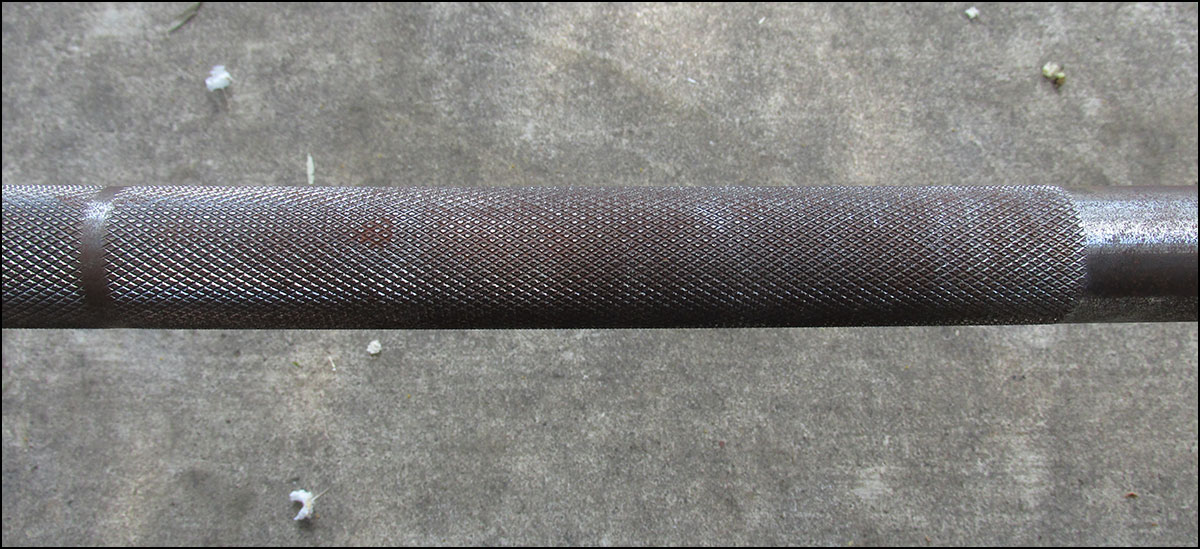
Stainless steel, on the other hand, is iron, carbon, and anywhere from 10%-36% chromium. Different types of stainless steel can have other elements as well; nickel, for instance; but it is the chromium that makes stainless steel resistant to rust.
When stainless steel is exposed to oxygen, a very thin, impervious layer of chromium oxide is created on the surface of the steel, and it’s this layer that protects and prevents oxidation of the underlying steel. If ever that layer of chromium oxide is removed (via a scratch or a chip of some sort), a new layer of chromium oxide will form and continue to protect the steel from rust. As long as there’s sufficient chromium present in the stainless steel (above 12% or so), it will continue to protect the stainless steel from iron oxidation.
But I’ve Seen Stainless Steel Rust
One of the selling points of stainless steel barbells is that they can be brushed and cleaned with no risk of damaging the surface. This is true in the sense that there is no chrome, zinc, or other applied finish on the steel to scrape off, but there is still the naturally occurring layer of chromium oxide to worry about. Removal of that thin layer can actually invite more rust; especially if it’s removed with a non-stainless steel brush.
Taking steel wool and/or steel brushes to stainless steel leaves thousands of little particles of steel (iron) on the surface of your bar, and these steel particles themselves begin to rust. If enough of these particles are present, and conditions in your garage are conducive to the formation of rust, the chromium levels of your stainless steel bar can potentially drop below the 12% threshold in those locations; leaving the stainless unable to re-form that chromium oxide layer.
Think about it like this. You take a stainless steel bar, tear off the chromium oxide layer with a steel wire brush while simultaneously depositing thousands of particles of iron across the surface of the bar. Couple all this with the fact that you store your barbell in a garage gym where relative humidity levels can actually be higher than they are outside (due to a lack of circulating air), and what do you get? Rust developing on stainless steel.
The good news is that this is correctable; your stainless steel bar doesn’t have to look like a piece of rebar that’s been sitting in the elements. All you need to do is remove the rust that is already present, follow up with a good cleaning and remove any steel particles that may have been deposited by a wire brush or wire wheel, dry it, and then make sure the bar isn’t being subjected to any other corrosive elements. Once clean and dry, the chromium oxide layer will reform and begin protecting the stainless steel from further oxidation.
How to Clean Your Stainless Steel Bar
Cleaning Do’s and Don’ts
First off, avoid any cleaning chemicals or solvents with mineral spirits, alcohol, or chlorides (chlorine, iodine, bromine), as they will strip the bar of that chromium oxide layer. Ammonia is one of those things where some people say it’s okay to use, and others say don’t. I would probably just avoid it to be safe.
Unless you have somehow managed to get an excessive amount of rust build-up that isn’t responding well to cleaners, I would avoid using steel brushes and wire wheels. If you must use a wire brush of some sort, try to find a stainless steel wire brush rather than a normal steel brush, and make sure that stainless steel brush was not previously used on steel. The idea here is to not cover the bar with iron particles.
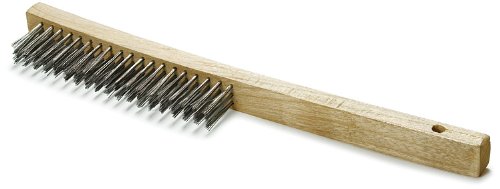
Cleaning Do’s and Don’ts
If you have no rust, but you want to remove gunk build-up in the knurl (like chalk, dust, skin, etc) in an effort to prevent potential rust, you have a few options.
First you can just brush the knurl out with a firm nylon brush. Nylon isn’t abrasive enough to displace the chromium oxide layer, but it will get rid of the majority of the gunk. A few select bar companies provide you with a nylon brush when you purchase a bar, but this is rare. Rogue Fitness sells a bar cleaning kit that contains a nylon brush for about $10, but you can probably find one for less in the cleaning section of just about any store.
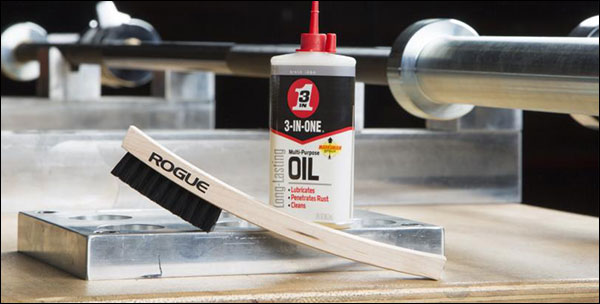
If you need a deeper cleaning than a dry brushing, try mixing a mild dish detergent with tap water and use that with your nylon brush. Most stainless steel cleaning guides that I found online suggest using a micro-fiber tower, but because of the sharp knurling that’s not going to be very effective.
Finally, if you have both mild surface rust and some really caked-in gunk, you can buy some stainless steel cleaner from the store. Bar Keeper’s Friend Soft Cleaner was recommended in more than one cleaning guide, as is applying a paste made from mixing baking soda and water. Again though, you’ll still want that nylon brush to get into the knurl, and regardless of which you use make sure to rinse the soap and chemical cleaners off the bar when you are done, and then thoroughly dry it. Water is the enemy.
Only when all else fails should you turn to abrasion cleaning with wire brushes. If you end up going this route, be sure to thoroughly clean the bar afterwards using at least one of the methods discussed above to remove any steel particles, and then store the bar somewhere where it won’t be exposed to moisture for a little bit.
Extra Cleaning Thoughts
Truth be told, the vast majority of us will never see oxidation on our stainless steel barbells. You really need to have either taken a nasty steel brush to it when it didn’t need that, or you live so close to the ocean that chlorine from the seawater is permeating the air and getting on your equipment. It’s also worth mentioning that if you do anything with steel (grinding, for example) where you store your stainless steel bar, it’s not only possible but extremely likely that it is being littered with steel fragments.
In other words, your stainless bar really shouldn’t be rusting. Something you are doing, or something in your environment is causing that rust. Figure out what it is and see what you can do to stop that going forward.
Preventing Rust in a Corrosive Environment
There are products that claim to protect stainless steel from oxidation. Some of these are for appliances and the like, and other more ‘commercial’ products are meant to be used on outdoor stainless steel items (architectural, pool accessories, marine fixtures, etc).
I am of the opinion that you do not need these products coating your barbell unless you live in a beach house on the East Coast or something. I don’t know how safe these chemicals are when it comes to being in constant contact with them, or how they will make the bar feel in your hands (slimy, greasy, etc). I imagine in all cases that it’s slightly less than ideal.
All you should have to do is keep your barbell clean, don’t spray it with corrosive chemicals, and don’t shower it with steel fragments. Do these things and I think you’re stainless bar will be okay and last for two lifetimes.
My Personal Experience with SS Barbells
I live in Central Texas where the average annual relative humidity level is between 65 and 70%. This is considered muggy; bordering on oppressive. It’s not Galveston or Florida wet, but it’s definitely not dry here.
Despite the relatively high moisture levels, I have still never had rust issues with stainless steel barbells. I have my share of oxidation issues with my bare steel equipment, and I’ve even seen rust form on chrome equipment, but never any issues with stainless. Matter of fact, you can see some current pictures of one of my oldest stainless steel bars here.
Additional Reading
- Stainless Steel Wikipedia
- Rust on Stainless Steel (pdf) by Sperko Engineering Services
- Cleaning Rust on Stainless Steel by GE


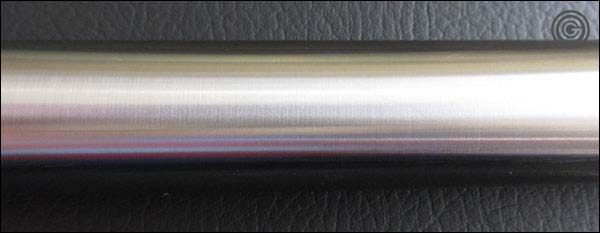

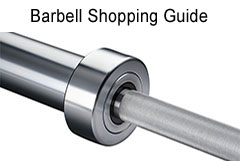
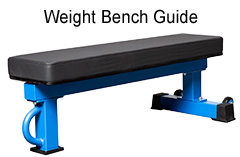
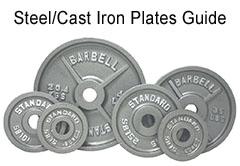

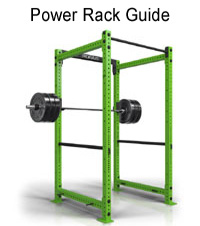


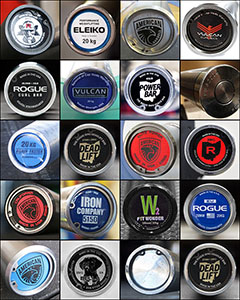


Beach rust is real. We have some stainless garage doors and copper drain pipes around here, right on the shore. Chromed guitar hardware rusts faster nearer the ocean too.
Stainless brushes are kind of hard to find. Brass deposits don’t rust and the brushes are softer so should not scratch but beware of brass-plated steel ones.
I’ve had pretty good luck with phosphoric acid in some circumstances — the reason why it’s in “Naval Jelly” metal cleaner. As we discussed it does leave stickiness so another cleaner is needed after it with easy brushing in knurling. Pretty much any oil is a good idea after cleaning and should control the problem where it can be used, but the oxide removal in knurling might be an issue requiring sticking to the brass brush alone (no oil) in such areas — do it whenever enough rust appears to become bothersome. A knifemaker I know disrecommends waxes since he says they can trap moisture IN.
If someone wanted rust on stainless, nitric acid fumes in the room sure do a bang-up job.
Yeah the reason I didn’t mention oiling the bar after a brushing is because I’m not entirely sure how having scraped down the chromium oxide and then covering it with oil impacts the chromium’s ability to re-oxidize. Not a single guide I came across mentioned the use of oil like you’d see with bare steel, so I was beginning to assume all I’ve heard about oil with stainless is just either myth or assumption.
Also the picture of the brush in the article is linked to a $3-4 stainless steel brush on Amazon. It is probably much firmer than brass, but not so hard to find I wouldn’t say. And no risk of it being plated. Just sayin’. Either are better than steel though.
Scotch-brite pads and Bar Keeper’s Friend will get rid of rust or tarnish on almost anything. I have some stainless-lined copper pans and I rarely use anything else on them — Bon Ami is good if you really care about shiny things, but Bar Keeper’s Friend actually works. And it works very, very well. Not many things will clean up stainless like BKF.
The two Barkeeper products are two mesh sizes of calcium carbonate (limestone) if you want to buy in bulk to save money. A finer version of Scotchbrite are fine-grade plastic steel-wool replacement pads.
If you want to spend the money for a gentle but effective power brush, 3M has some very nice color-coded plastic abrasive wheels. Some of the large ones are too aggressive, while the ones that about 1/2″ diameter are probably all OK.
So, would using plates with metal inserts on SS sleeves be a bad thing? Would that metal on metal contact cause rusting?
No, it’s not a bad thing. You may get some metal flakes from the plates on the sleeve and they may indeed rust if humidity levels are high enough, but it’s an easy clean up since it’s just surface rust. It’s not avoidable anyway.
Sleeves of any finish or material will get scratches and other random damage over the years. I’m not saying be abusive or negligent with equipment, but babying a bar sleeve in an effort to avoid that is a bit much. Stainless is a good finish for any part of the bar, and will last longer than a finish.